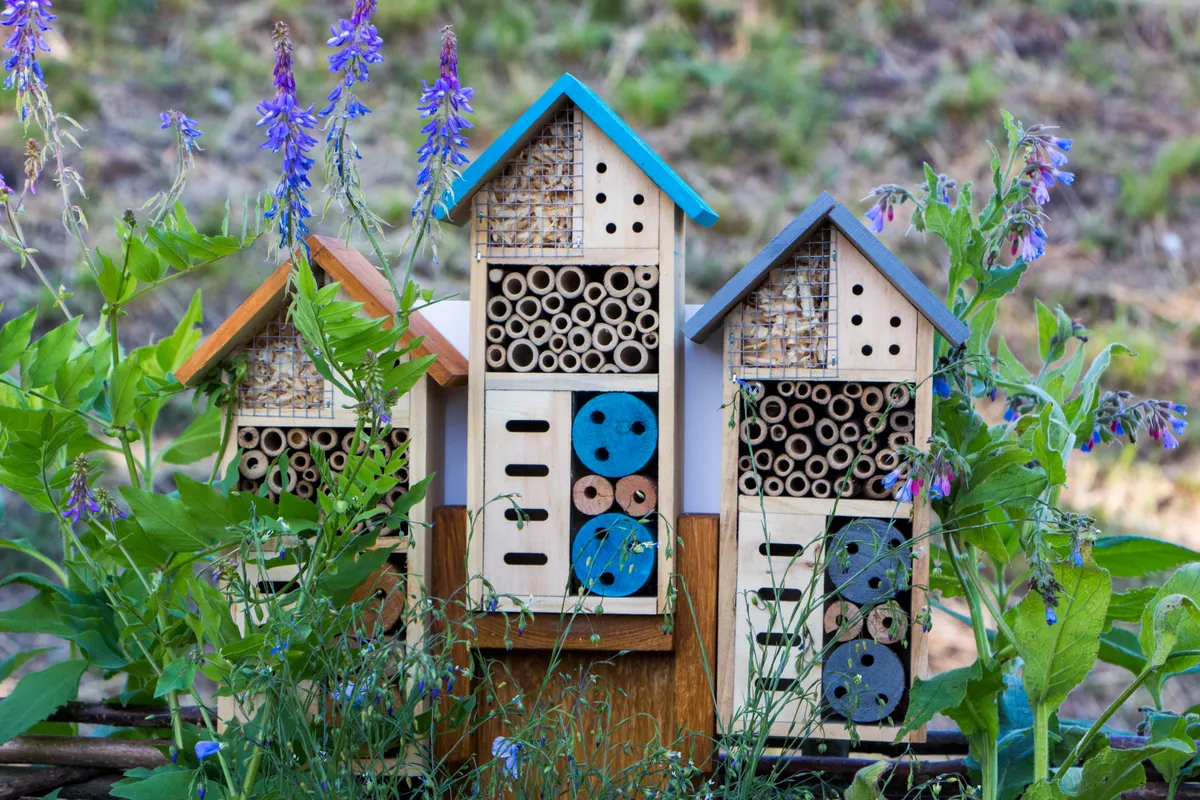Beetles are one of the most diverse groups of insects in the world, and the UK is home to a wide variety of species. From the familiar ladybird to the more unusual stag beetle, there is something for everyone to enjoy.
This guide will introduce you to some of the most common and interesting beetles found in the UK. You will learn about their appearance, habitat, diet, and behaviour. You will also find out about the threats facing beetles and what you can do to help them.
So, whether you are a seasoned naturalist or simply curious about these fascinating creatures, this expert guide by entomologist and author Richard Jones, is for you.
Learn more about fascinating British species such as butterflies, bees and dragonflies. We've also gathered our favourite insect identification books which are handy to use when you're in the field.
How many beetle species are there in the UK?
With over 4,000 species in the British Isles, many of which are very small, beetles are often portrayed as being a ‘difficult’ group, the preserve of experts. However, there are plenty of beetle species that are either large, brightly coloured or easy to identify in the field or from photos, such as ladybirds, stag beetles, and longhorn beetles.
Around 40% of the UK's insects species are beetles. Around 1,000 of these live in woodlands and forests, and around 2,000 can be found in London – including the incredible stag beetle, which is the largest beetle in Britain. And did you know the world’s largest beetle measures over 15cm in length?
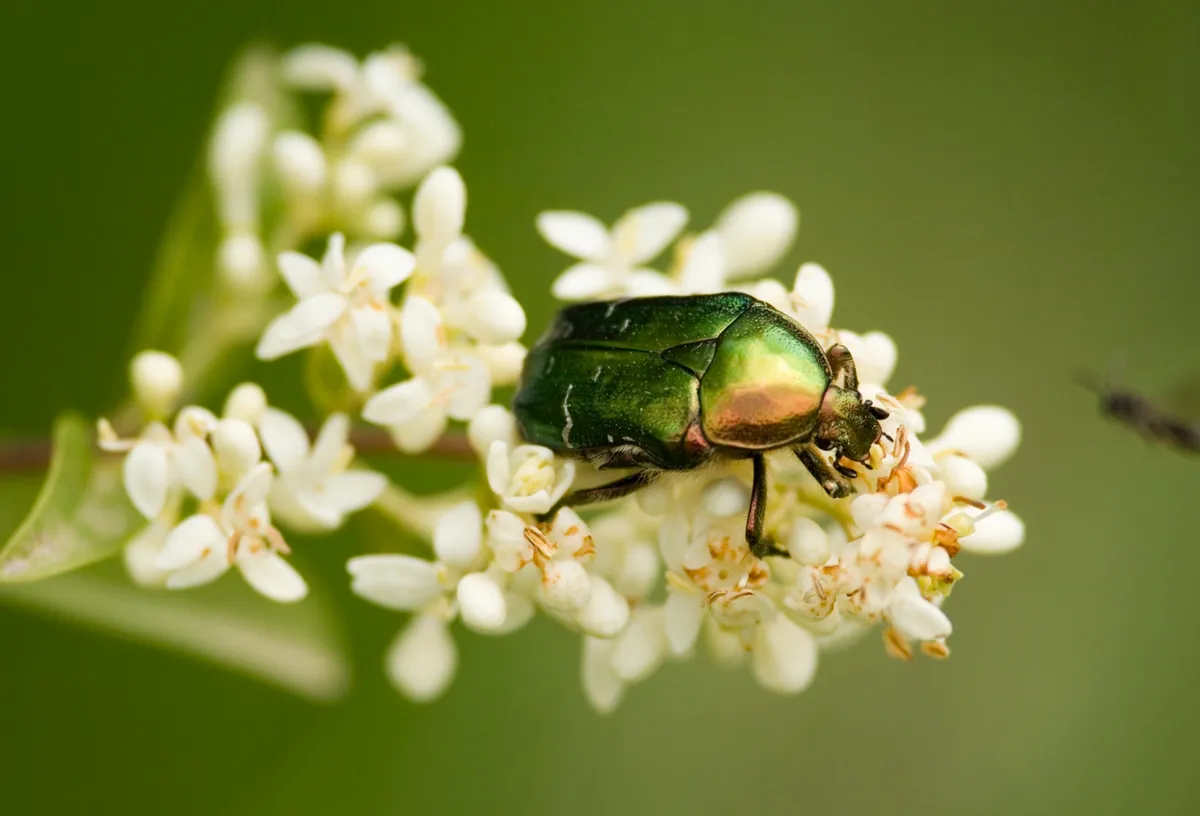
Confirmations can always be sought at the 'I spot nature' identification site where your uploaded photos (of beetles, and indeed any organism) are regularly checked by experts and enthusiasts. You can also download the 'Seek' app from iNaturalist to identify plants and insects for free.
More beetlemania
- 6 amazing dung beetle facts
- How big are beetles?
- Where do beetles live? The different places beetles thrive
What are beetles?
Beetles (scientific name Coleoptera, meaning 'sheath-wing' in Greek) are an insect with two pairs of wings: one hardened outer set called an 'elytra' (like a 'shell'), which protects the more delicate flight wings housed underneath. They have three main sections to their bodies – a head, thorax and abdomen; six jointed legs; an exoskeleton and a pair of antennae.
What do beetles eat?
British beetle species have a varied diet. Some species, such as the lesser stag beetle like to eat rotting wood, while the orange and black sexton beetle, favour decaying animals to lay their larvae.
Meanwhile, the dor beetle eats faeces from animals. Many other species prefer the pollen and nectar from plants.
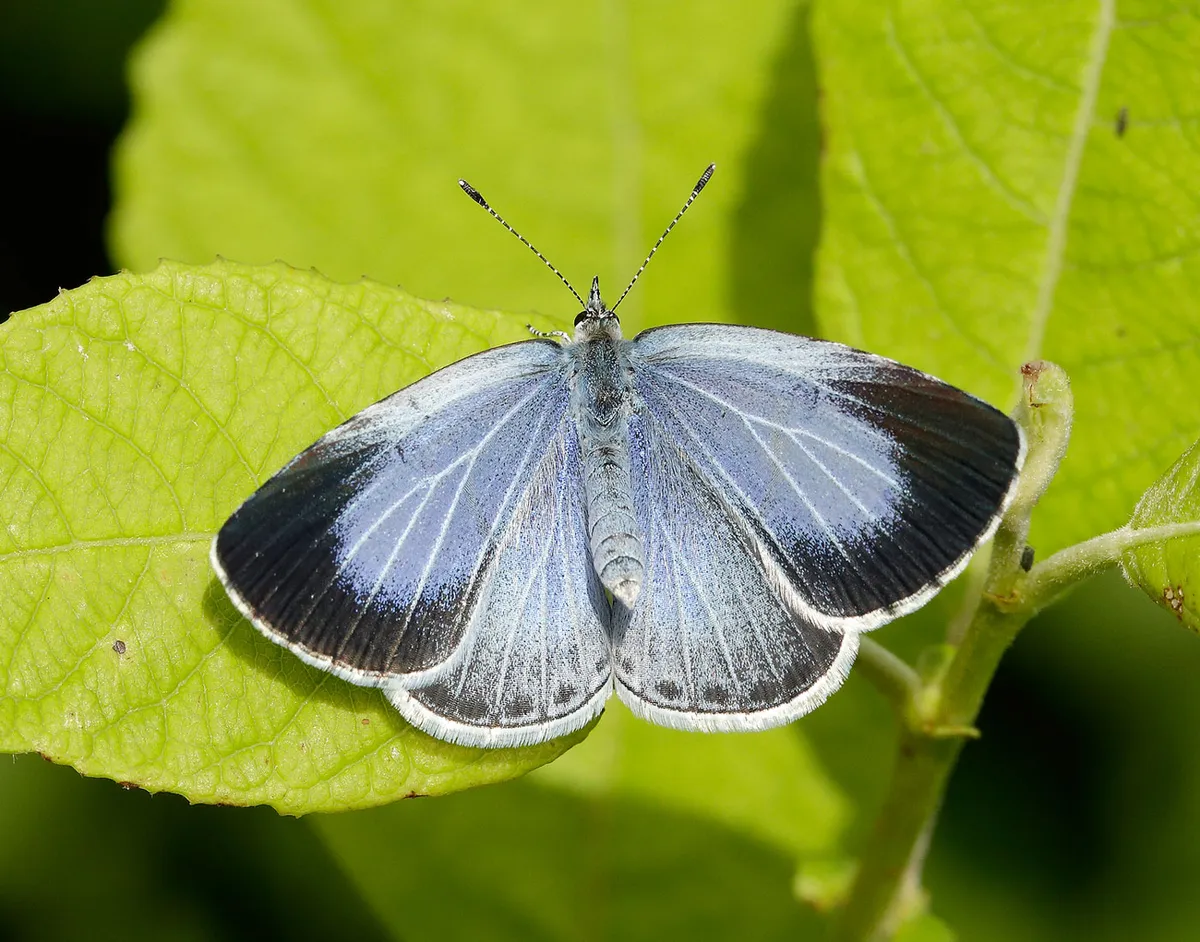
How to identify British beetle species
Green tiger beetle (Cicindela campestris)
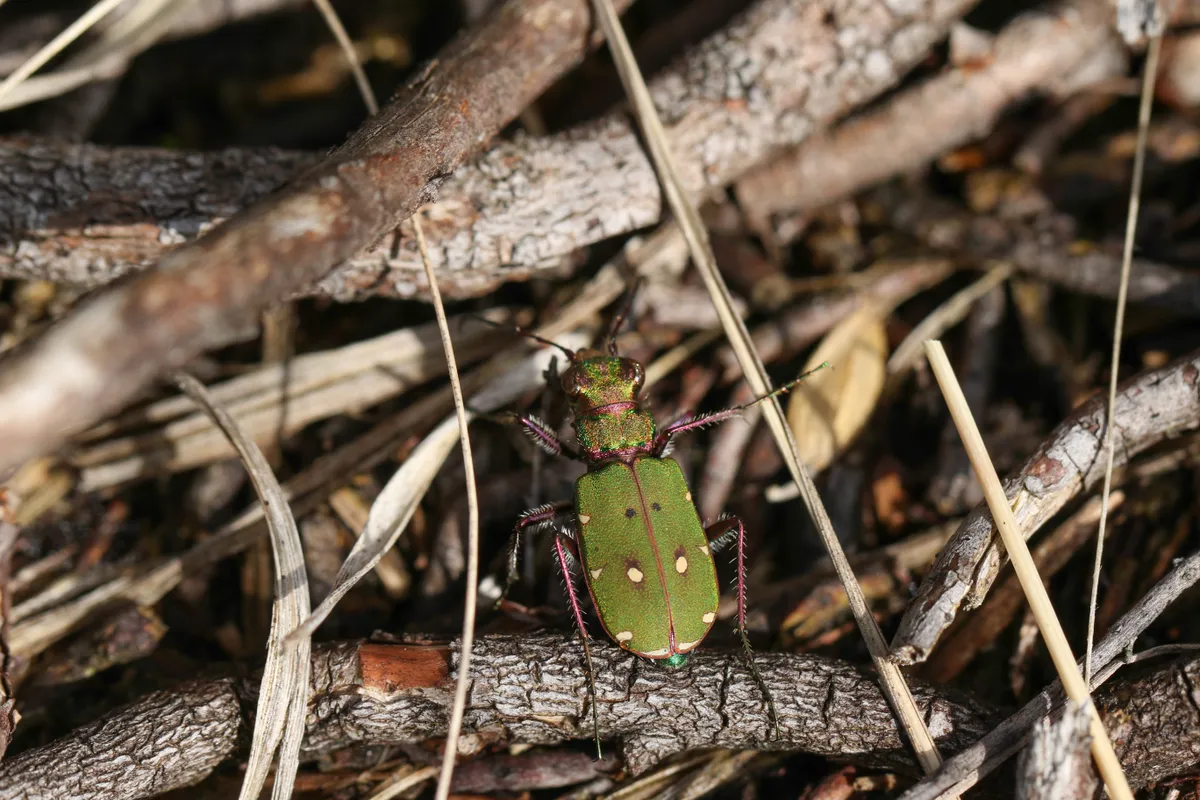
With long legs and sharp jaws, this fearsome predator takes short flying leaps to attack prey or escape. It is very active on patches of sparsely vegetated or bare sandy or chalky soil.
Cockchafer (Melolontha melolontha)
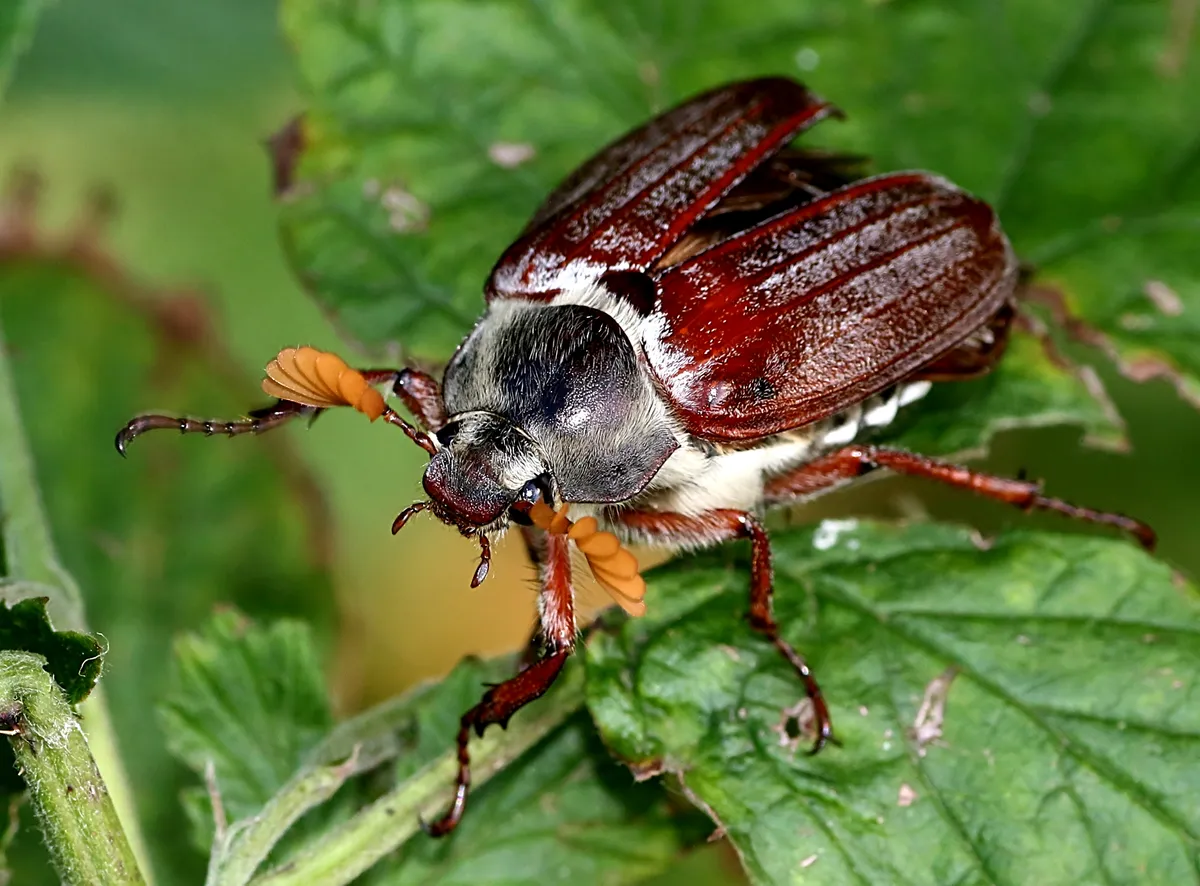
Mostly nocturnal, cockchafers are also called May-bugs for its appearance in spring. Old reports note clouds of cockchafers banging on to lit windows or street lamps. Larvae are fat, pale, C-shaped maggots in the soil, feeding on grass.
Rose chafer (Cetonia aurata)
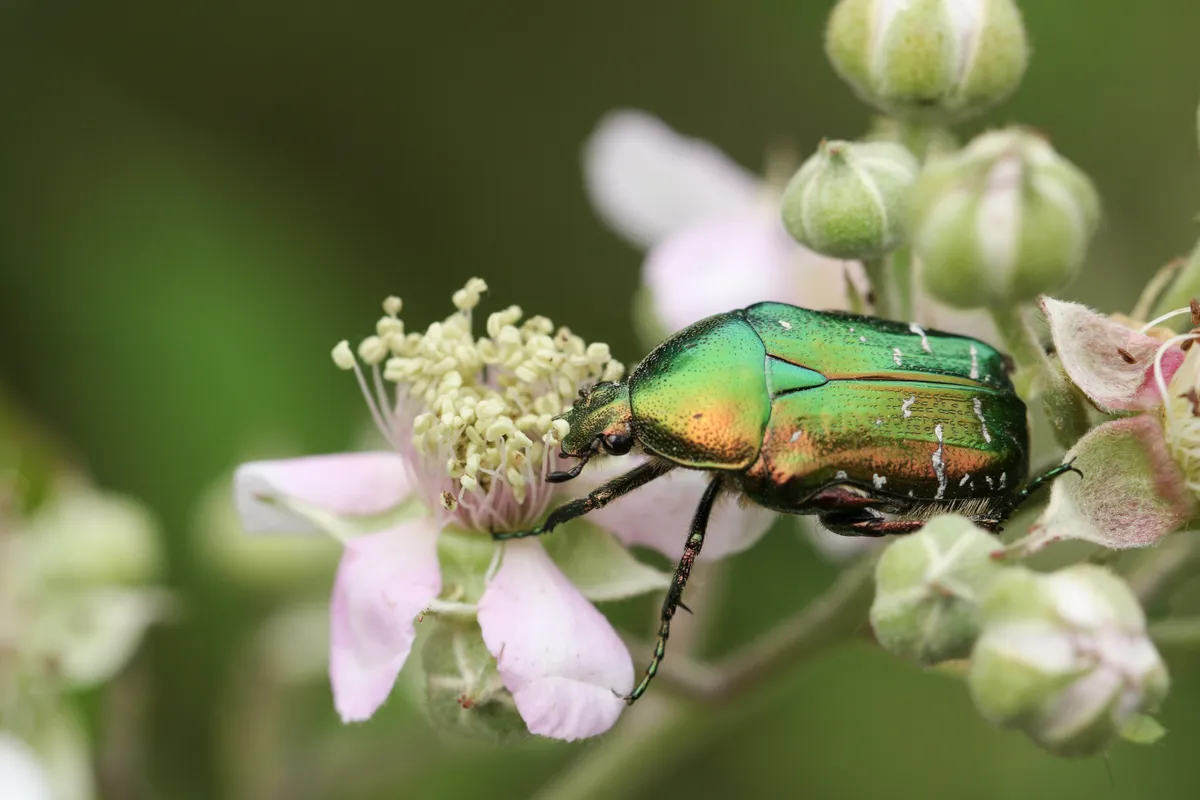
This living jewel is metallic green all over. Unlike most beetles, it flies with its wing-cases closed and has a special notch at the side to accommodate its membraneous flight wings. It often sits on flowers.
Twenty-two-spot ladybird (Psyllobora vigintiduopunctata)
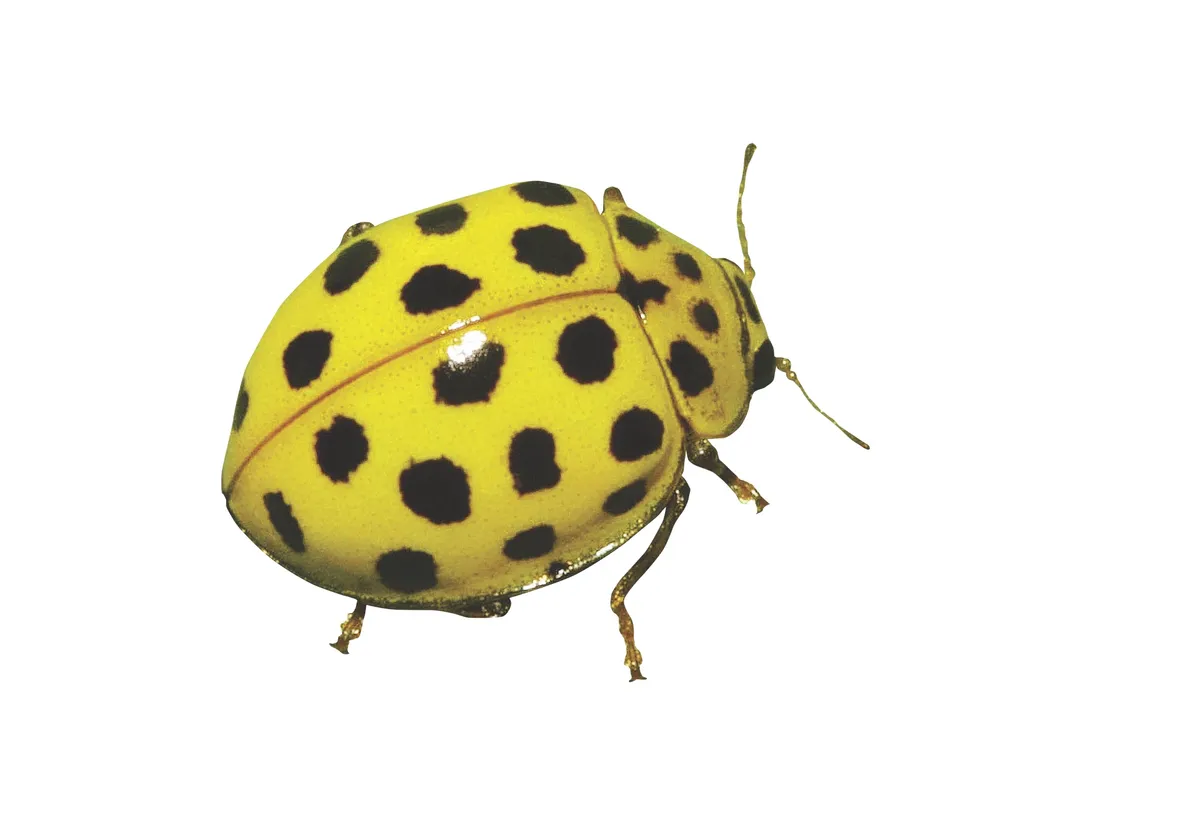
The brightest lemon-yellow of any British beetle, this always has 22 round jet-black spots on its cheerful wing cases. A mildew feeder, it grazes on mould and fungal hyphae.
Whirligig beetle (Gyrinidae)
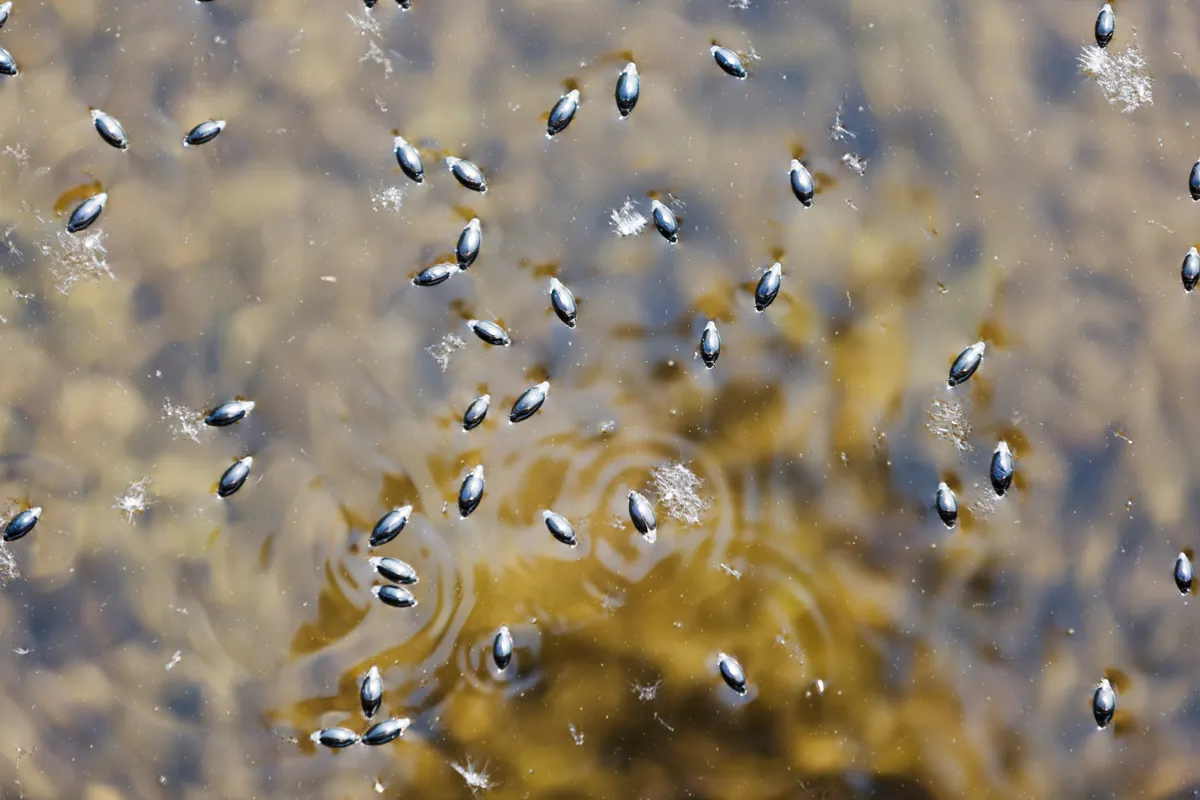
This small, shiny oval beetle is so named because it swims in tightly, sometimes frenzied circles on the surface of ponds and slow moving rivers and streams. Here it hunts small creatures that fall onto the water. It can also dive to catch prey.
Learn more about freshwater pond wildlife.
Violet ground beetle (Carabus violaceus)
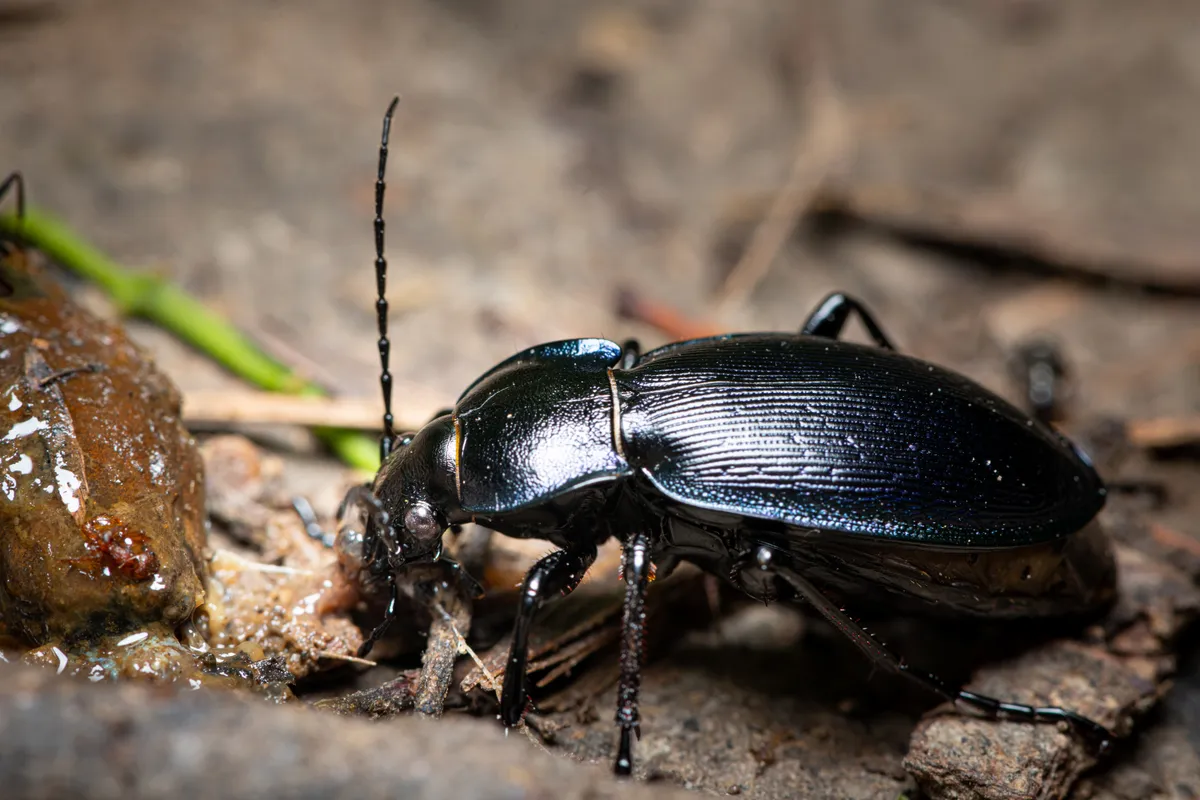
A large (3cm long), fast-moving and aggressive beetle with a powerful bite that hunts worms, small slugs and other invertebrates. It roves at night in woods, meadows and gardens and has a distinctive purple sheen to its carapace. If alarmed, it gives over a rank smell.
7-spot ladybird (Coccinella septempunctata)
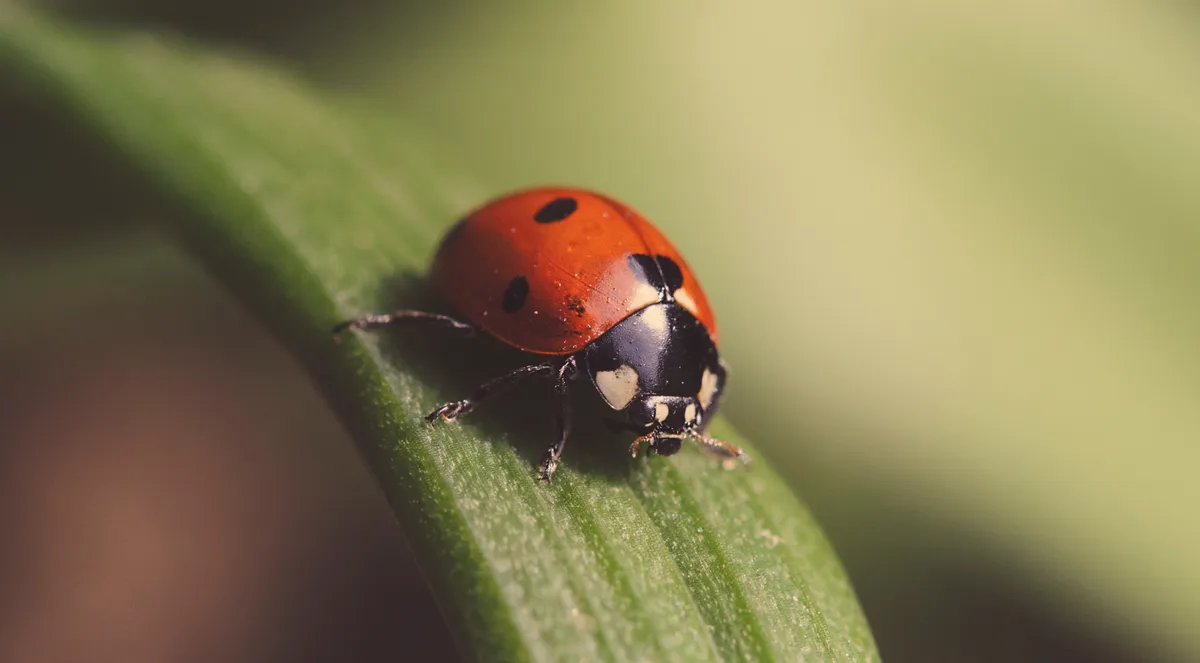
Our most familiar beetle and a nursery rhyme favourite with its bright red oval carapace with black spots. Still common, although declining. Its dark-grey larva have a reptilian appearance and, like adults, prey voraciously on aphids. Truly a gardener's friend.
Oil beetle (Meloe)
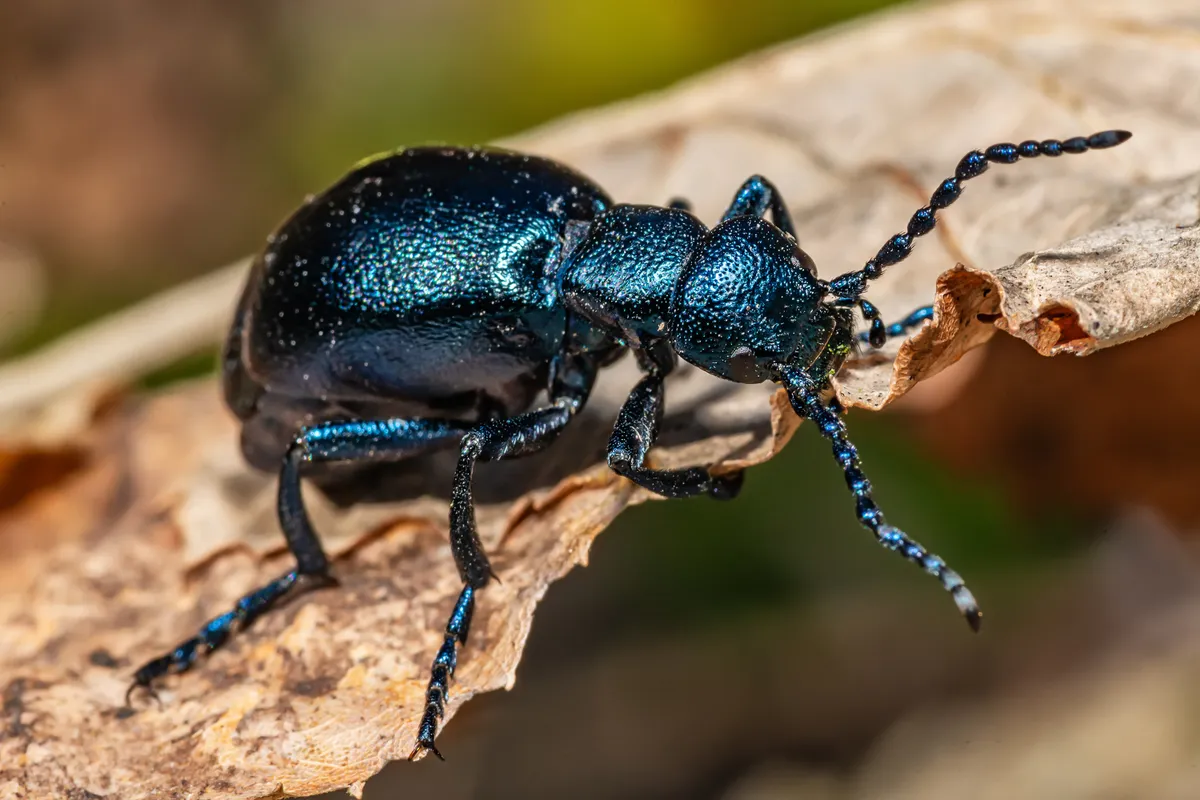
Up to 4cm long, these are hugely impressive insects with distinctively bulbous abdomens and are found commonly on meadow flowers, particularly celandines, in spring. There are five oil beetle species in the UK and they are named for their shiny, oily appearance. The larvae parasitise solitary mining bee nests.
Soldier beetle (Cantharidae)
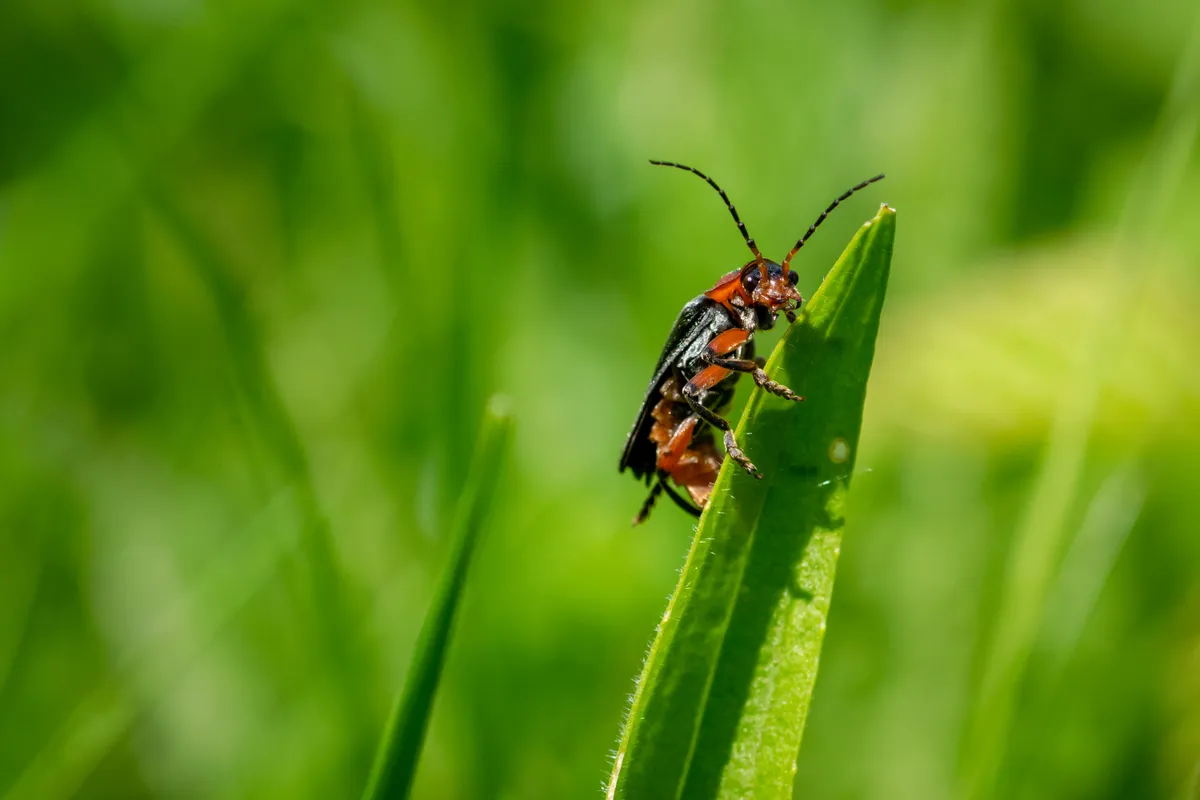
A raft of handsome species found on summer flowers (particularly thistles and umbellifers) and are fantastic pollinators. All have long, thin bodies. The red soldier is orange-red all over but with a black tip to its abdomen. Other species have black-grey heads and abdomens separated by red thoraxes.
Devil’s coach-horse (Ocypus olens)
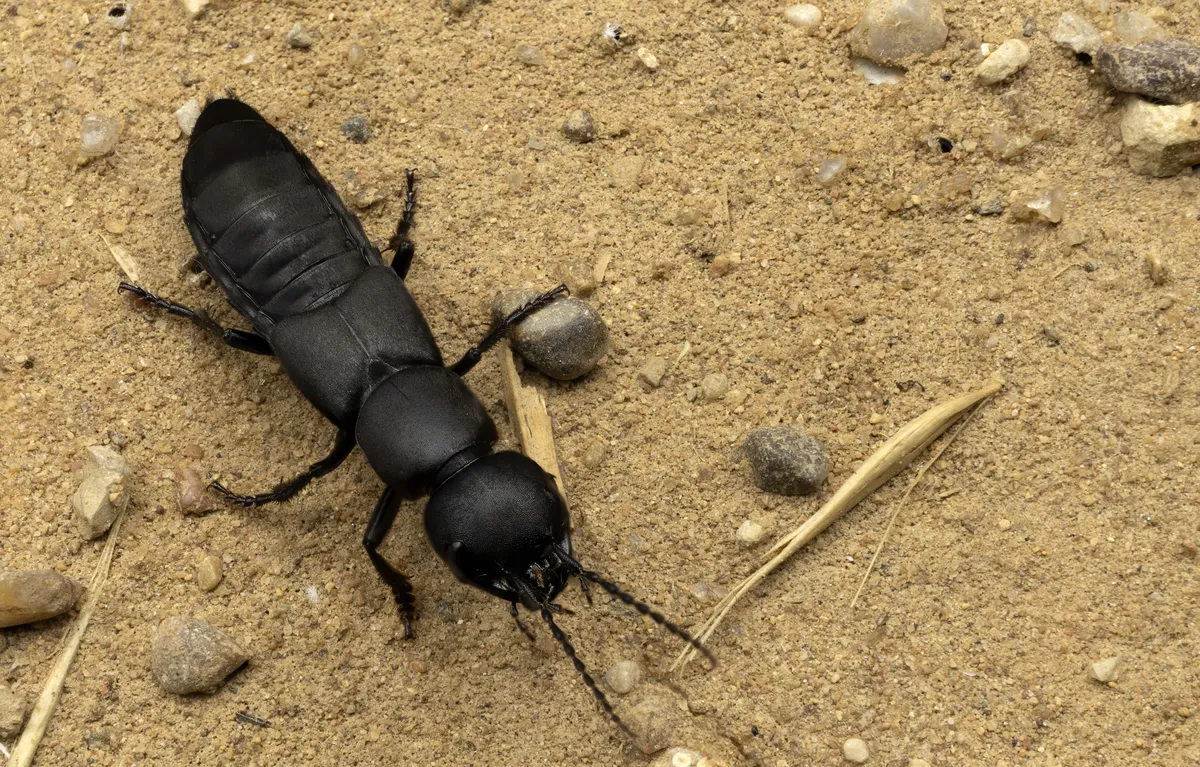
Britain’s largest rove beetle is a gothic monstrosity found under logs and stones. Its short wing-cases expose a flexible hind body – it will rear up and wave its large jaws menacingly, and it can nip.
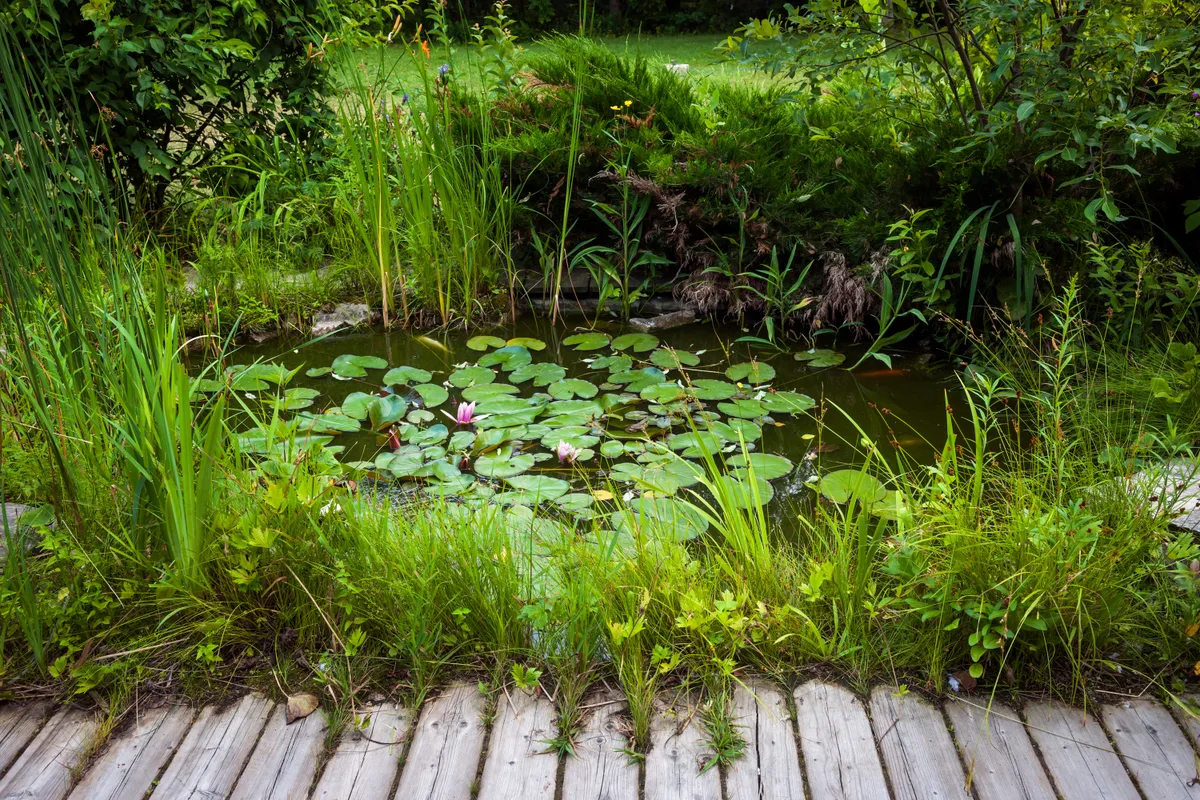
Red-headed cardinal beetle (Pyrochroa serraticornis)
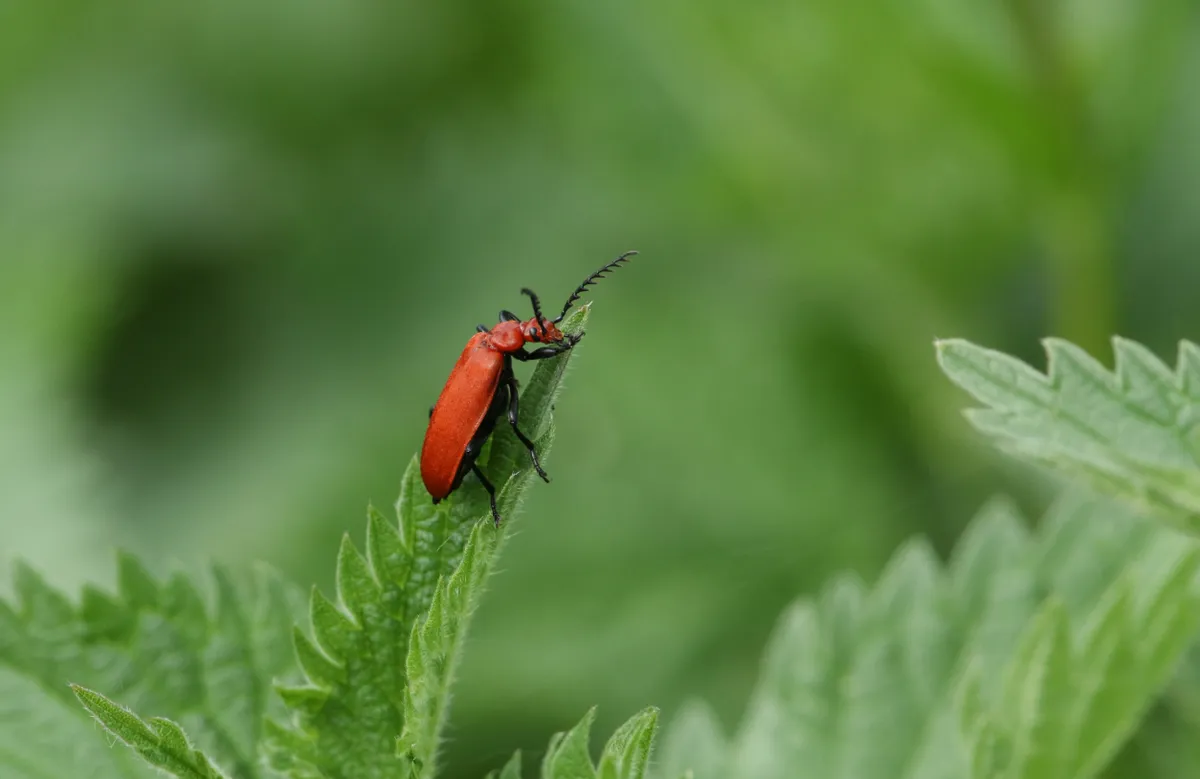
It is named for its papal colour scheme, which warns predators not to eat it as it contains poisons (it's harmless to pick up). Flat larvae, with two-pronged tail, feed under logs and bark.
Green tortoise beetle (Cassidinae)
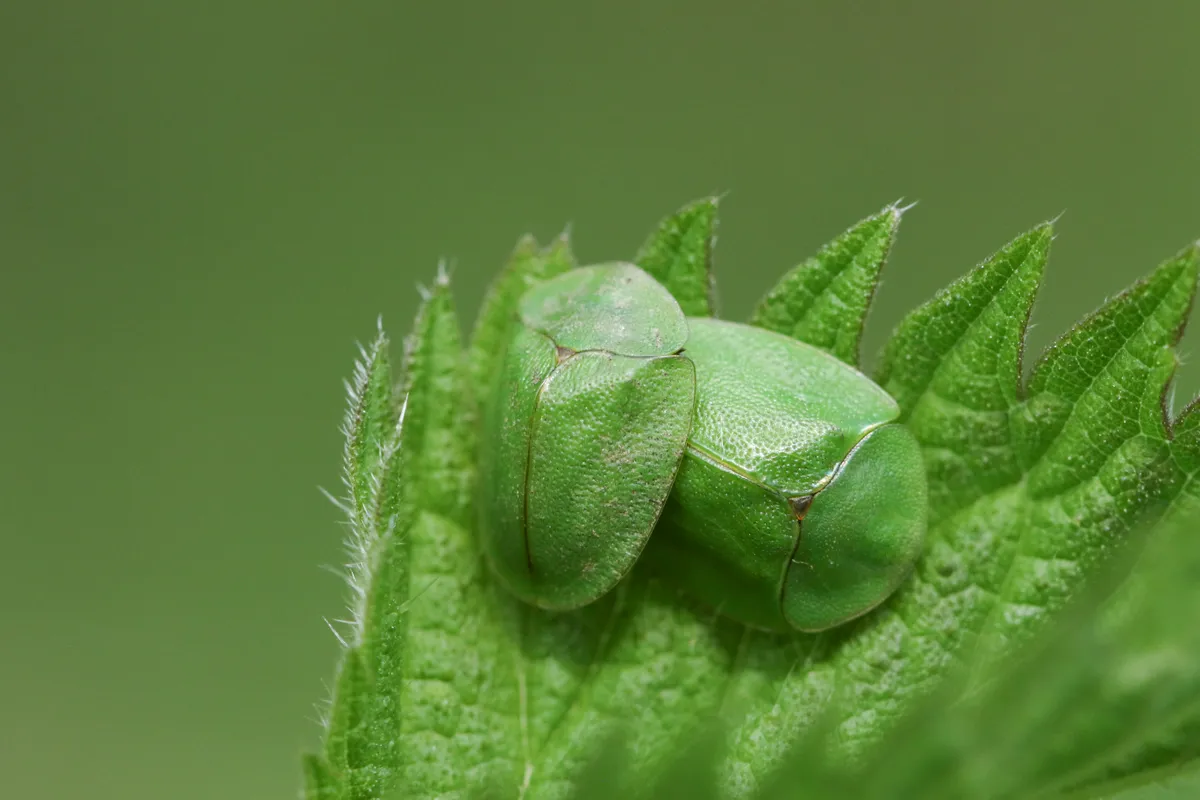
Flattened and flanged, it clamps down on to its water-mint food-plant leaf if disturbed. The larvae keep hold of their dry excrement and moulted skins to make a predator-avoiding blob-parasol on their tail end.
Wasp beetle (Clytus arietis)
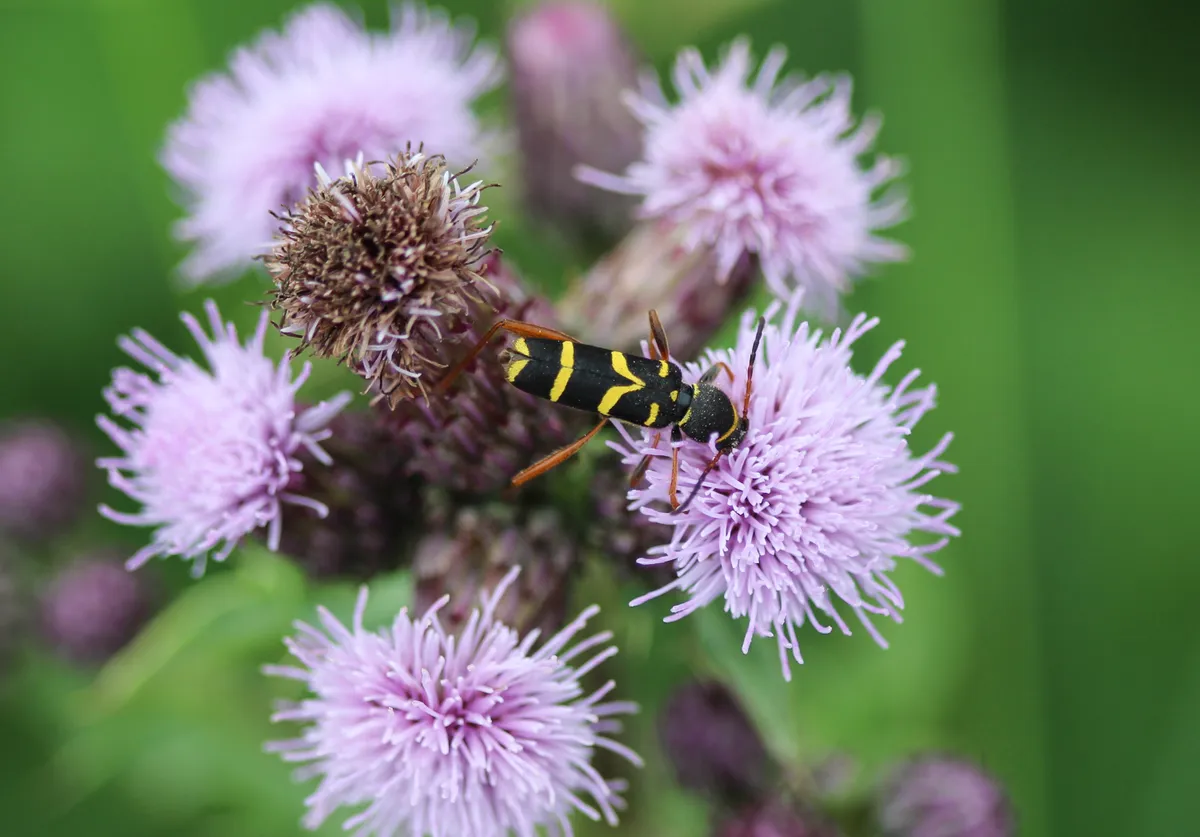
This has deceptively wasp-like colours, plus striking red legs, jerky movements and hawking flight. Larvae feed in dead wood; adults are often seen in sunshine running on stacked logs, or buzzing over bramble flowers.
Stag beetle (Lucanus cervus)
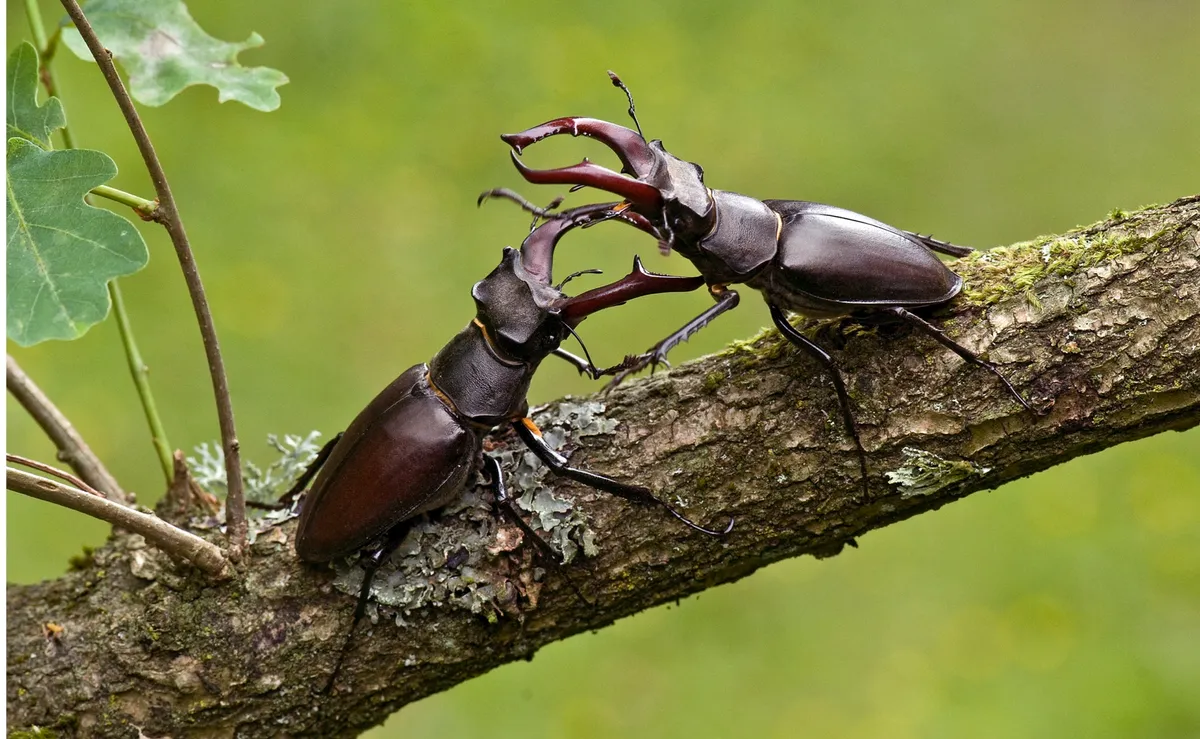
The UK’s largest beetle spends most of its life out of view. The larva feeds on dead wood below ground for five years before emerging as an adult. Only the male possesses the ‘antlers’, which are infact enlarged jaws. The stag beetle has declined due to a loss of dead wood habitat.
Why not join the great stag hunt and help protect this precious beetle?
Bloody nosed beetle (Timarcha tenebricosa)
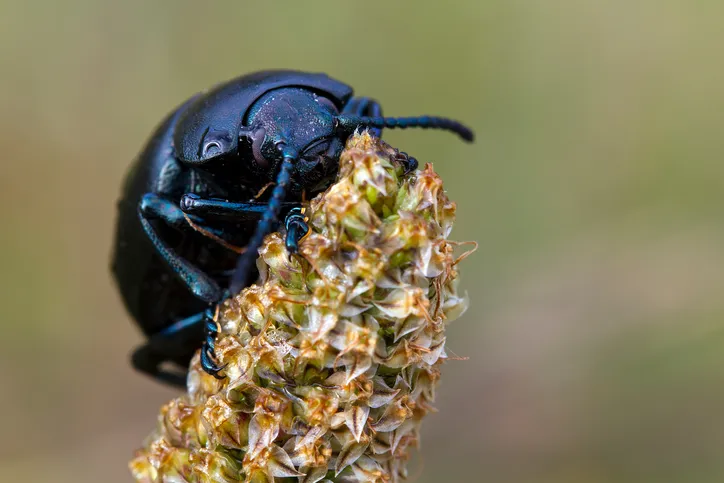
This handsome black beetle is flightless and can be seen walking along the ground or in low vegetation in April. It’s often found in coastal areas and on grasslands in the south of the UK. The beetle’s name comes from its defence strategy of exuding bright red fluid from its mouth when threatened.
Dor beetle (Geotrupes stercorarius)
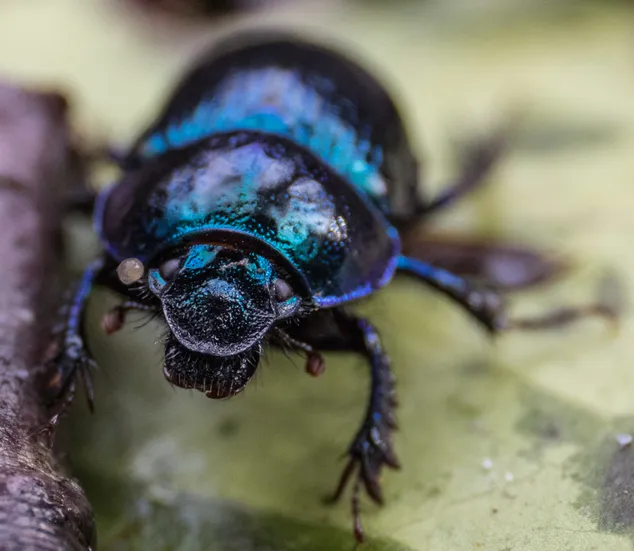
This large beetle has a distinctive black domed body that shines blue or violet in the light. It feeds on dung and is found in grasslands and woodlands grazed by sheep or cattle. The endless munching of dor beetles saves from being knee deep in animal dung.
Sexton beetle (Nicrophorus)

This distinctive beetle has a black and orange patterning on its wing cases. It performs an important service in burying and recycling carrion (usually small mammals and birds). Its antennae are packed full of receptors enabling it to smell a dead animal up to a mile away.
Harlequin ladybird (Harmonia axyridis)
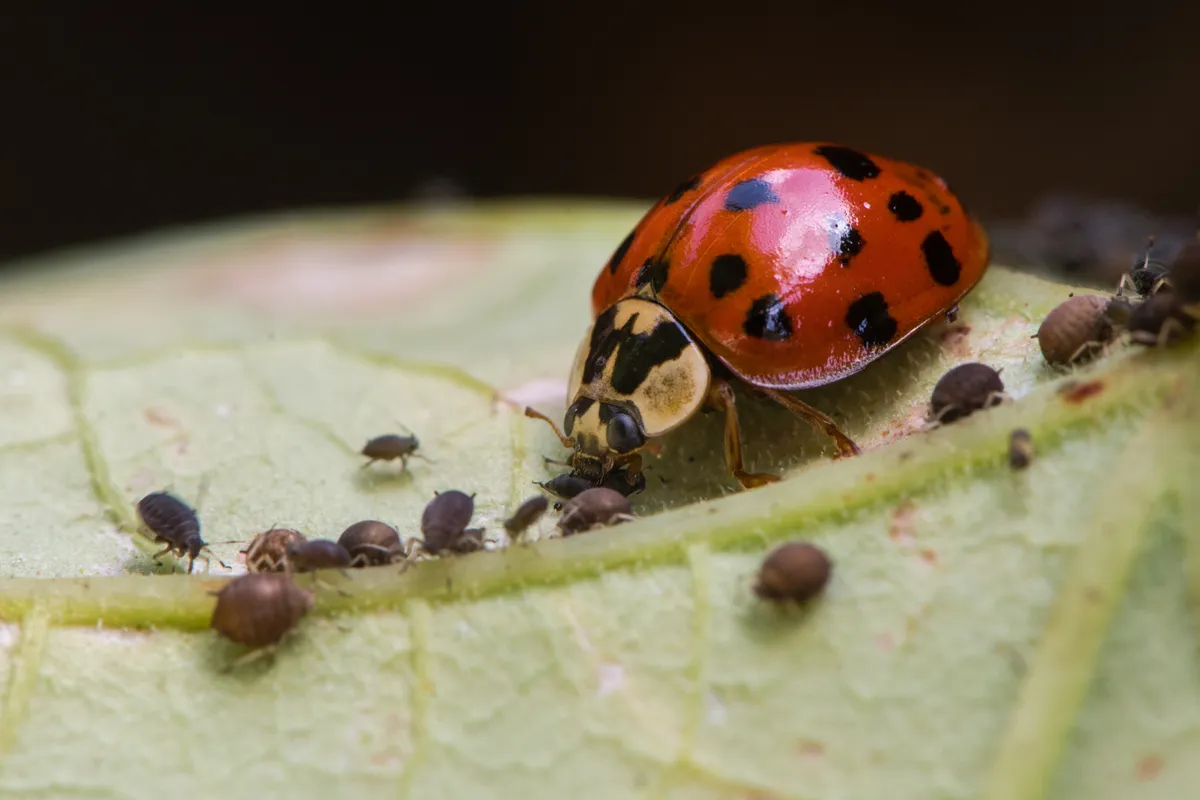
The most invasive ladybird, the harlequin arrived in Britain in 2004 and has spread rapidly. This beetle has the potential to jeopardise many of our native ladybird species through competing for food or eating their larvae - along with scale insects, eggs and larvae of butterflies and moths, other ladybirds and even their own larvae (cannibalism). It is very variable in appearance and so well established that controlling their numbers would make little difference to their presence overall. They often overwinter in large groups on the insides of buildings.
Great diving beetle (Dytiscus marginalis)
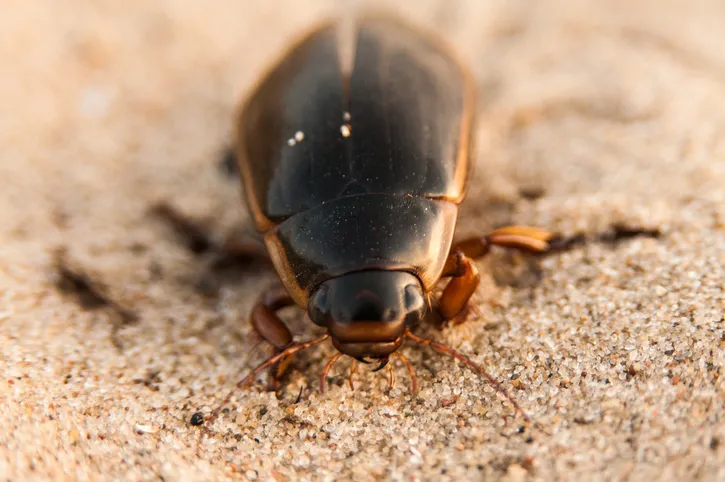
Both larvae and adults are voracious predators of tadpoles, aquatic insect larvae and small fish. The larvae have a scorpion-like appearance and live underwater for two years before transforming into the adult beetle. The 3cm long adults come to the surface regular to replenish their air supply by sticking their abdomen’s out of the water.
Thick legged flower beetle (Oedemeridae)
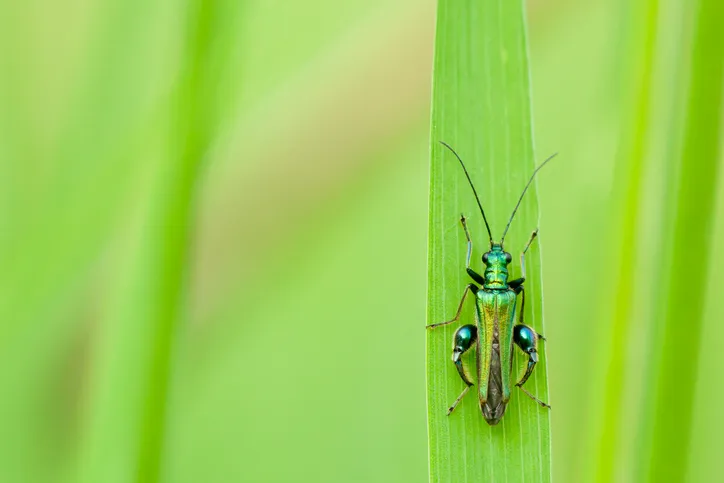
This spectacular shiny metallic green beetle is most often seen on flowers such as daisy, cow parsley and hawthorn blossom. Only the male has the thickened ‘thighs’ that give the beetle its name; it uses them to impress females. The larvae live in hollow plant stems.
Glow worm (Lampyris noctiluca)
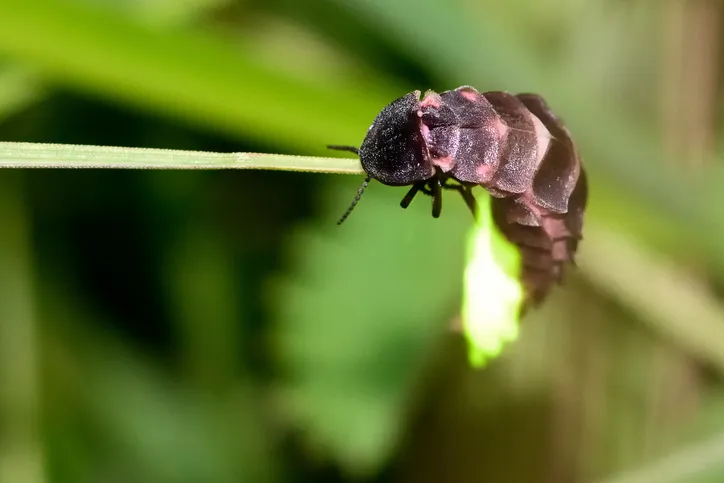
Despite their name, glow worms are actually beetles rather than worms and it is only the females that glow. She does this to attract a male. Female glow worms have no wings so cannot easily move around to find a mate. Instead they climb up grass stems and switch on their lights. The glowing acts as beacon to the males who have excellent sight and spend their limited time flying around looking for females. Once they have mated, females turn out their lights, use all of the energy they have left to lay 50 to 100 eggs and then die.
Both sexes only live for two or three weeks as adults, so they can’t let a bit of rain get in the way of the need to reproduce.
In the UK, glowing females can be seen from May to September, however the main glow worm season is late June/July. They are mostly found on edge habitats of unimproved grassland, as these contain longish grass that the females can climb up and are usually open enough to give the males a good view.
How to make a bug hotel
Whether you have a large space, or just a windowbox, you can make a bug hotel that not only provides sanctuary for a host of fascinating creatures but also allows you to get close to them.
